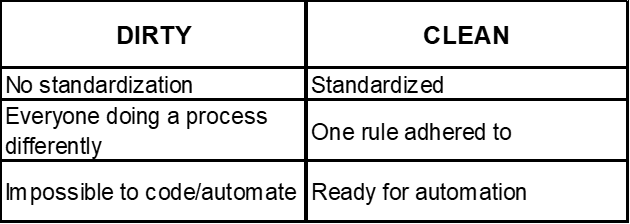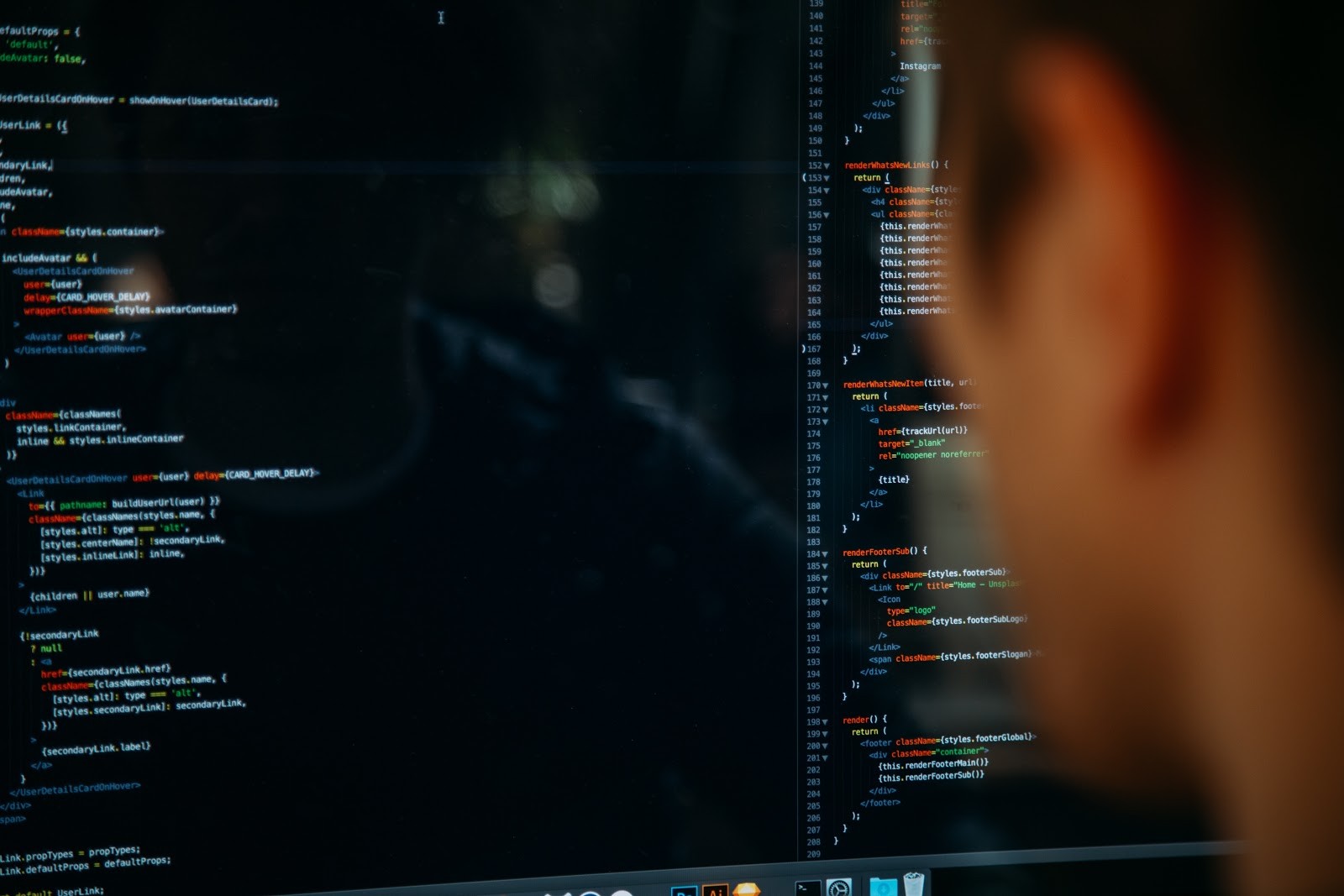Have you decided that your business can do much better with automation? Super. Have you thought about how you’re going to approach that? Things don’t just switch from data entry to efficient automation overnight, it takes time.
If you’re going to start saving time and money by using automation, then it makes sense that you approach it right the first time. The trouble is, very few companies do.
Dealing with ‘Dirty’ Processes
Every single task that is done in an organization requires rules to define the scope, quality and method that should be followed. However, often these rules aren’t followed to a tee, and this reduces quality and introduces more possibility for human error.
Recently, OfficeAutomata worked with a beta client who had no standardization across their processes. There was plenty of data but when data is flowing in from 40 different Excel sheets with 20 different process variations, it’s not hard to see why it can’t be automated.
This is when processes are dirty. It’s not unusual, but it does tend to frustrate people at the beginning of the automation journey – they want to move quickly, but it’s better to get it right the first time than trying to automate something that simply isn’t ready to be automated.
“The trouble with doing something right the first time is that nobody appreciates how difficult it was.” – Walt West
Process rules must be set. Everyone in an organization, even if they are in different departments, must follow the same process to complete a specific task. Of course, there can be exceptions, but we’ll come to that later.
Overlooking and Human Error
Until OfficeAutomata came to the market, other RPA companies were sending in consultants to monitor processes, in order to get the company ready for automation. However, unless they had a consultant watching every single person at work, they couldn’t possibly know how every person was carrying out a process in different ways. It is impossible to code an automation if there are dozens of people doing it in their own alternative manner.
In order to make a process clean, the business needs to decide on the rules for a process; it needs to be standardized across the organization. Then, it’s possible to automate the process and people can be freed up to concentrate on higher-value tasks.
How to Clean Up Your Processes
As discussed in our last article, The Automation Journey Part 3, using people to find out these processes can lead to more errors. So, how do you approach your processes to make them clean enough for automation?
Firstly, you can use Intelligent Process Discovery to track processes between your departments. OfficeAutomata’s software has a unique ability to track not just users, but also teams and departments.
From here, you can analyze which processes are fed into by different departments or whether they need to at all. You can also see where departments do a process differently so that it can be addressed and standardized; removing any miscommunication. Often it’s interdepartmental processes which are the ones of most value to a company.
Define a Process Owner
Another thing that makes a process dirty is when it has more than one owner. When moving towards automation, it’s important to figure out who should be in charge of a process. By centralizing process(es) to one owner, they can manage and determine the quality control for those processes.
Defining the process owner makes someone responsible and ensures that responsibility isn’t passed off. Also by making everyone aware of exactly who is in charge of particular processes, process bottlenecks and exceptions can be quickly addressed.
The Benefits of Standardization
When you have defined the process owner(s), then you can begin standardization. Having one clear way to do a process means that there’s less space for ambiguity or error. It also means it can be automated exactly the way that you want it to be, for the outcome that you’d like to see.
Think about it, if everyone followed the same way of doing things and had the same way of doing a process – how much quicker would everything work? Standardization is necessary for efficiency, but it’s difficult to enforce and monitor with humans.
If you’ve used Intelligent Process Discovery, you’ll have seen which processes can be automated quickly and which ones require process standardization. This takes away any guesswork and shows you where you need to clean things up.
When you have complete visibility over all your processes, you can determine the best way to do it. This means that important details won’t be overlooked. Automating these processes means that the best way to complete a task is being followed over and over again. It is enforcing your standards.
What About Exceptions?
Of course, there are exceptions. Exceptions aren’t a problem, per se, it’s just when there are too many different variations.
For instance, a company may have offices at different locations where their processes are very similar but have a slight variation. When building an automation, it’s easy to add certain variables (if x is present, then the automation must take this into account etc.) however, there can’t be an exception for everything, or it just wouldn’t flow.
So, if the processes are almost the same, the variable can be built-in, and the automation will work. If they’re different in every single location, then it will stall.
The whole aim is to make your processes as clean as possible so they are ready for automation. OfficeAutomata can help you get to clean processes so your automation journey runs smoothly.
Resources:
Article by channel:
Everything you need to know about Digital Transformation
The best articles, news and events direct to your inbox
Read more articles tagged: Automation, Featured








